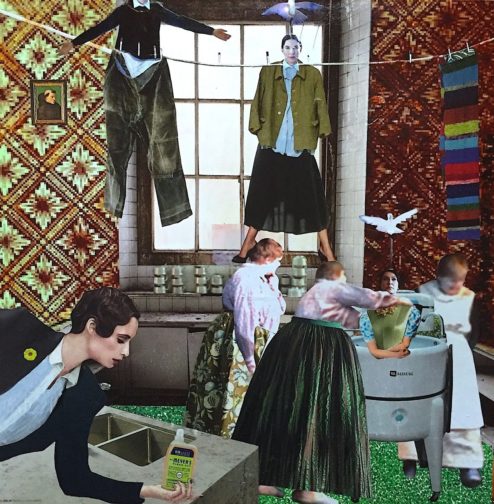
Laundered and Levitating
September 2017. Truly I’ve never been big on saints. More accurately I’ve never been anything on them. Not even ambivalent. They simply haven’t registered and consequently, I’ve never cared to read Butler’s Lives of Saints or any other saint literature. Others have. St Teresa of Avila. Writer Patti Smith. Playwright David Ives. Poet and scholar Anne Carson even tried to eat the pages.
At one time philosophers like Nietzsche, Schopenhauer and William James thought a saint to be one of the great and necessary human types along with the artist, thinker and hero. Nietzsche changed his mind about the saints along the way but the others didn’t.
Who are they? These saints? And why consider them? If it weren’t for performance artist Marina Abramovic I probably wouldn’t. The thing to be noted, says Romanian philosopher Emil Cioran, is their predisposition toward suffering. In Tears and Saints he inquires as to whether there isn’t ‘enough suffering in the world. It seems not’, he continues, ‘to judge from the saints who excel in self-torture.’ He goes on to inform us further that saints ‘never miss a single opportunity among the many varieties of agony.’ The payoff? And there has to be a payoff. After ‘voluptuous pain’ comes a ‘voluptuous feeling, as of infinite happiness.’
Two things about Cioran: He and Nietzsche think similarly about the saints. He uses the term ‘voluptuous’ a lot when writing about them.
Playwright David Ives was headed for the priesthood when he swerved from the path in order to write for the theatre. Lives of the Saints is the title for a series of his short plays. One called Soap Opera features a Maypole washing machine as a saint of sorts. She is very good. Pure. Perfect. But perfection, especially the negative form saints pursue (check out Cioran) can be a problem. Witness this poor Maypole admitting to wanting to be bad and later crying out hysterically for the repair man to break her so he can then repair her. ‘Break me. Agitate my agitator. Make me suffer. Break me. Do it. Do it.’
St Teresa of Avila also wishing to suffer, believing she was not perfect, experienced pain through various sorts of self-torture and during visions. In one such vision her heart was repeatedly pierced by the fiery point of a golden lance and she writes: ‘The pain was so great it made me moan; and yet so surpassing was the sweetness of this excessive pain that I could not wish to be rid of it.’ Her prayer: ‘Lord, either let me suffer or let me die’. The lord, in turn, gave her spiritual delights, raptures, union with God. He caused her to levitate, a gift she seems to have viewed with some ambivalence. While she did enjoy rapture during the event, the timing was off, and on the whole the experience was rather violent, frightening and unfortunately impossible to resist. At some point in her life she confessed, ‘I’d rather the earth swallow me up. I ask God constantly to free me from this.’ An aside: she levitated a foot and a half off the ground.
When Abramovic was asked in an interview if divine forces ever took her during a performance she said yes. ‘I couldn’t turn it off. I felt so pure. I didn’t want to eat. You get this illumination, this energy, but what do you do with it afterwards? It can kill you.’ A further aside: She levitated about three and a half feet off the ground.
I find myself thinking about saints and artists. Abramovic certainly seems saint-like. She’s well acquainted with self-torture, pain and payoff, renunciation. And yet she’s not really a saint. She’s an artist. Another of those great and necessary human types. Artists saints. Saints artists. If there’s a difference, it’s got to be in the context.
My collage is part soap opera, starring a Maytag, and part Abramovic’s kitchen-series homage to St Teresa. The story has it that St Teresa being hungry went into the kitchen to make lunch. Just as she was stirring the soup, the Lord raised her up and the mundane pleasures of preparing and eating had to wait until the presumed ecstasies passed. I’m hoping the soup wasn’t burnt too badly. The ecstasies first-rate.